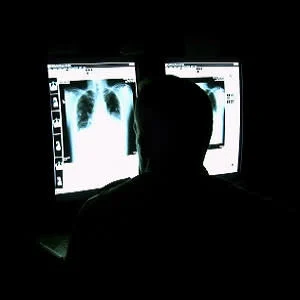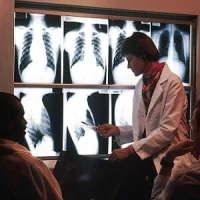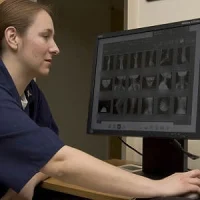Chest x-rays (CXR) are one of the most frequently requested imaging examinations and are fundamental to many patient pathways. New research examining the diagnostic accuracy of CXR interpretation by reporting radiographers (technologists) shows they are able to interpret CXRs at a level comparable to consultant radiologists.
Chest radiographs are a complex imaging investigation and are central to many patient pathways. Marked variation between observers can exist when interpreting CXRs and there is limited current evidence that examines the accuracy of reporting radiographer CXR interpretation. The only other previous study that has examined the diagnostic accuracy of CXR reporting by reporting radiographer was in an academic setting, researchers say, but no direct comparison was made with the performance of consultant radiologists.
For this study, a cohort of consultant radiologists (n = 10) and reporting radiographers (technologists; n = 11) interpreted a bank (n = 106) of adult CXRs that contained a range of pathologies. Jack-knife alternate free-response receiver operating characteristic (JAFROC) methodology was used to determine the performance of the observers (JAFROC v4.2). A noninferiority approach was used, with a predefined margin of clinical insignificance of 10 percent of average consultant radiologist diagnostic accuracy.
Based on the results, the diagnostic accuracy of the reporting radiographers (figure of merit = 0.828, 95% confidence interval 0.808–0.847) was noninferior to the consultant radiologists (figure of merit = 0.788, 95% confidence interval 0.766–0.811), P < .0001. There was no apparent difference in diagnostic accuracy between the consultant radiologists and reporting radiographers for different current annual workload and experience. The small number of participants in each subset prevented further statistical analysis.
"The performance of the reporting radiographers in the current study also compares well to previous work, which measured the diagnostic accuracy of consultant radiologists," the authors write. "That both the number of cases and the number of observers in the current study are comparable to the total sum of the previous literature is a strength of the current study and suggests that the results are generalisable to a wider population of trained reporting radiographers."
Reporting radiographers, the authors note, could contribute as part of a sustainable strategy to meet additional clinical demand and diagnostic capacity requirements.
Source: Academic Radiology
Image Credit: U.S. Navy photo by Chief Warrant Officer 4 Seth Rossman.
References:
Woznitza N et al. (2018) Chest X-ray Interpretation by Radiographers Is Not Inferior to Radiologists: A Multireader, Multicase Comparison Using JAFROC (Jack-knife Alternative Free-response Receiver Operating Characteristics) Analysis. Acad Radiol, Published online: April 30, 2018. https://doi.org/10.1016/j.acra.2018.03.026
Latest Articles
Radiologists, radiographers, chest x-ray, CXR interpretation
Chest x-rays (CXR) are one of the most frequently requested imaging examinations and are fundamental to many patient pathways. New research examining the diagnostic accuracy of CXR interpretation by reporting radiographers (technologists) shows they are a










